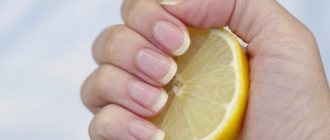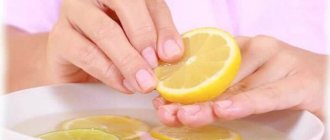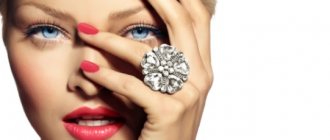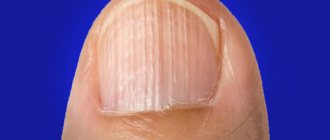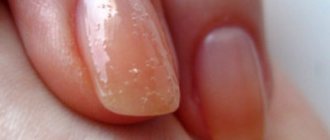Newfangled, long-lasting nail coatings, including shellac, have become a real gift for housewives and businesswomen. But you have to pay for the comfort of wearing beauty on your nails - after removing the shellac, the nails peel, become thinner and turn yellow. Experts tell us why this happens and how to restore the nail plate at home.
Causes of yellow nails after shellac
How nice it is to come to a beauty salon and put yourself in the hands of a professional master who will skillfully perform a beautiful manicure.
At the same time, few of us are familiar with the composition of the gel that is fixed on the nails. But the packaging claims collagen, which, with the help of a special lamp, literally “melts” into the surface layer of the nail.
During the next correction, the old gel polish is removed along with the upper part of the nail, and this is the biggest danger to its health. This is why experts do not recommend wearing Shellac all the time. It is advisable to take breaks every six months.
Lamp dirty
Clean instruments are not only the calling card of the master and ensuring sterile conditions. A dirty lamp may cause the polymerization effect to weaken.
Therefore, it is necessary to wipe the lamp daily with the following liquids:
- Liquid for removing the sticky layer with medium dirt;
- Liquid for removing gel polish in case of increased contamination.
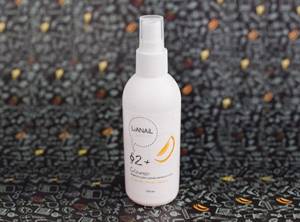
Liquid for removing sticky layer
What clients don't know yet
When a girl agrees to shellac, she is driven by an understandable desire to remain charming and attractive. It just doesn’t hurt to know the following nuances of applying gel polish:
- Ultraviolet radiation, which allows for rapid drying of the composition, is aggressive to skin cells. Caution should be exercised by those who have moles on their fingers. Those who suffer from dermatitis or are prone to allergic rashes should not dry their manicure in a UV lamp.
- Damage to nails is caused by tight sealing with artificial material; the nail plate does not breathe, dries out and breaks.
- To remove the old coating, masters use a product that also destroys the nail.
When nails turn yellow from polish
Among the main reasons why fingernails turn yellow after removing gel polish, experts identify several:
- Applying a decorative coating without using a base layer. This technique allows you to save time and money on purchasing a base, but worsens the condition of your nails. Colored pigments penetrate deep into the nail plate, coloring it or giving it an unaesthetic shade.
- Using low-quality cosmetics. Cheap, low-quality varnishes contain harmful substances (nitrocellulose, formaldehyde) that negatively affect the appearance and health of nails.
- Abuse of decorative cosmetics and the use of aggressive manicure removers. Constant application of shellac does not allow the nail plates to rest, causes oxygen starvation of the tissues, a decrease in local immunity, the development of fungal infections and a change in the natural color of the nails.
- Using iodine to strengthen nails. Periodic use of baths with this pharmaceutical product is useful, but with frequent strengthening in this way, a chemical burn of the nail plates occurs.
Nails turn yellow from varnish and when malfunctions in the functioning of internal organs and systems occur. These may be chronic diseases of the liver, gallbladder and lymphatic system, hypo- and vitamin deficiency, lack of calcium and selenium in the body, endocrine disorders, decreased defenses due to prolonged use of antibiotics or a protracted illness.
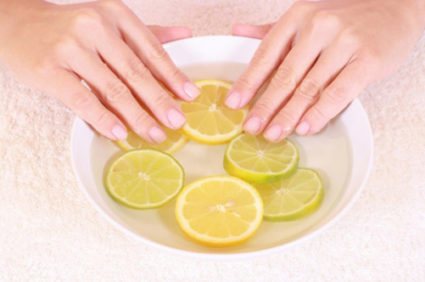
Treatment of yellow nails after shellac using traditional methods
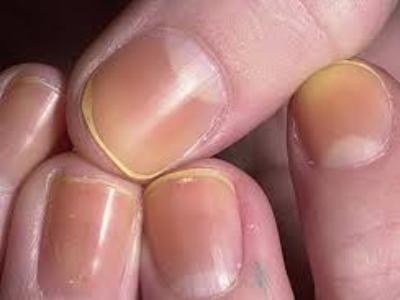
If you are sure that you do not suffer from diabetes, vitamin deficiency and anemia, yellow nails after Shellac are treated using the following folk recipes:
- Freshly squeezed lemon juice has whitening properties. Squeeze a couple of drops of lemon juice onto a cotton swab and wipe the yellow areas. Baths with the addition of 20 grams of juice per 0.5 liter of water are also suitable. This remedy for yellowness is rather cosmetic; it is difficult to call it therapeutic.
- Chamomile saves from many diseases. In our case, she also did not stand aside. Pour 2 tablespoons of flowers with 200 ml of boiling water. You need to infuse the decoction for half an hour. Before making a vitamin bath for the skin of your hands and nails, dilute it with boiling water; the temperature should be pleasant and warm. Keep your hands in the bath for at least 15 minutes. The procedure must be repeated 2-3 times a week.
- Hydrogen peroxide will help restore your nails to a healthy appearance, even if other methods have not helped. 1 tablespoon of ammonia is mixed with 2 tablespoons of baking soda. The mixture is applied to the nails, the paste is kept for 5 minutes.
- Using a fork, soften the cranberries. The juice is distributed over the nails and left for 5-10 minutes. By the way, it is not necessary to use fresh berries; frozen ones will do.
- Sea salt has a beneficial effect on the condition of the nail plates. It is better to choose salt without adding dyes, flavors and oils. Olive oil works well; it is added to the sea bath immediately before its preparation. Salt baths will not only restore nails, but will also make the skin of your hands velvety and soft, and heal cracks. It wouldn’t hurt to take a sea bath as a preparatory step before a manicure.
- Toothpaste can help get rid of yellow discoloration. Apply it for 5-10 minutes, there is no need to rub in.
- Measure out 1 tablespoon of gelatin and add 1 cup of hot water. As soon as the temperature of the liquid becomes acceptable, lower your hands into the bath. The procedure takes 20 minutes.
- Melt the paraffin candle and let it cool. Dip your hands into the viscous mass and let the substance cool directly on your palms.
Some information about chemistry and polymerization
Why might a burning sensation occur? This effect can be understood by understanding how the polymerization process occurs under the influence of UV rays. In those seconds when the nails are in the lamp, the material changes its state. Like any other chemical reaction of this type (exothermic), polymerization is characterized by the release of heat. How much burning or heating of the nail she will feel depends on the level of thermal energy released and the woman’s threshold for perceiving sensations. In some situations, when drying, the sensations are perceived only as pleasant warmth, in others - as an unpleasant painful burning sensation. Why does varnish bake in a lamp? There are several reasons for a painful burning sensation. Some of them are directly related to the quality of the gel polish, others - to the characteristics of the lamp or the individual characteristics of the nail.
What not to do
On the Internet you can find tips on how to get rid of yellowness after shellac, which will only worsen the current situation. Beware of such manipulations:
- Mechanical removal of the surface layer with a nail file and sanding with a buff. The surface layer is easier to restore than the deep layer. Remember that you need to get rid of not just the symptom of yellowness, you need to get rid of the cause.
- You should not paint over the yellowness with varnish compositions with a rich color. The intense dye literally eats away and only makes things worse.
The lamp is not suitable for gel polish type
Most often, the type of drying lamp is indicated by a special marking on the varnish jar (UV for ultraviolet, LED for LED lamp). The latest generation of gel coatings produces varnishes that can polymerize in both types of lamps.
If the method of polymerization of the varnish is not indicated, then when purchasing a product you should ask the seller about this.
Important! In LED lamps, LEDs do not burn out and do not lose their power, therefore, if the selected coating does not require the use of a UV lamp, it is better to give preference to an LED lamp.
Preventive measures
Even knowing exactly why nails turn yellow, many people again encounter this problem because they neglect basic preventive measures:
After successfully getting rid of nail fungus, it is necessary to treat all shoes weekly with special sprays or solutions for several weeks, and regularly use antifungal creams. After a couple of months, the frequency of events can be reduced.
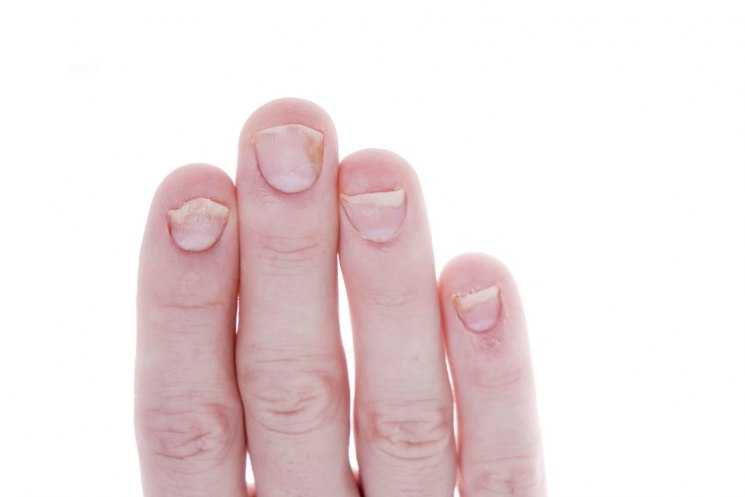
When cleaning or hand washing, you should wear rubber gloves to protect your hands from chemicals.
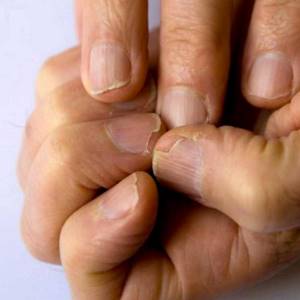
Heavy smokers are advised to get rid of the bad habit.
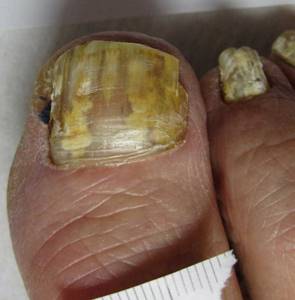
Following these measures will help maintain the beauty and health of your nails. If the nail plates have already begun to turn yellow, you should not put off visiting the doctor for too long - cosmetic manipulations will not solve the problem.
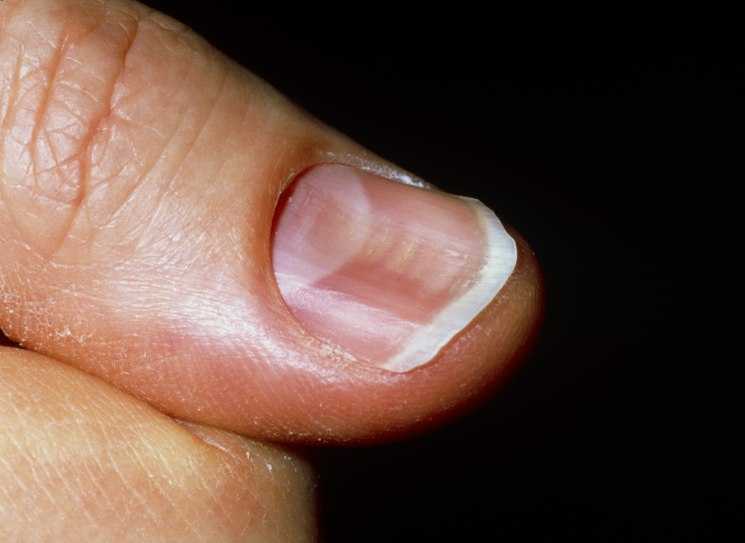
Other reasons
In addition to the listed diseases, varnishes, age-related changes, and bad habits, yellowing of nails is caused by:
- taking certain medications (tetracycline, quinolone antibiotics, arsenic, carotene, quinolone);
- malnutrition, lack of vitamins and minerals;
- exposure to ultraviolet radiation or the use of self-tanning, when the product gets on the fingers in the cuticle area;
- genetic characteristics, when everyone in the family has nails with a yellow tint;
- drinking coffee and strong black tea in large quantities;
- contact with detergents, cleaning compounds for cleaning or washing dishes without protecting hands with gloves.
